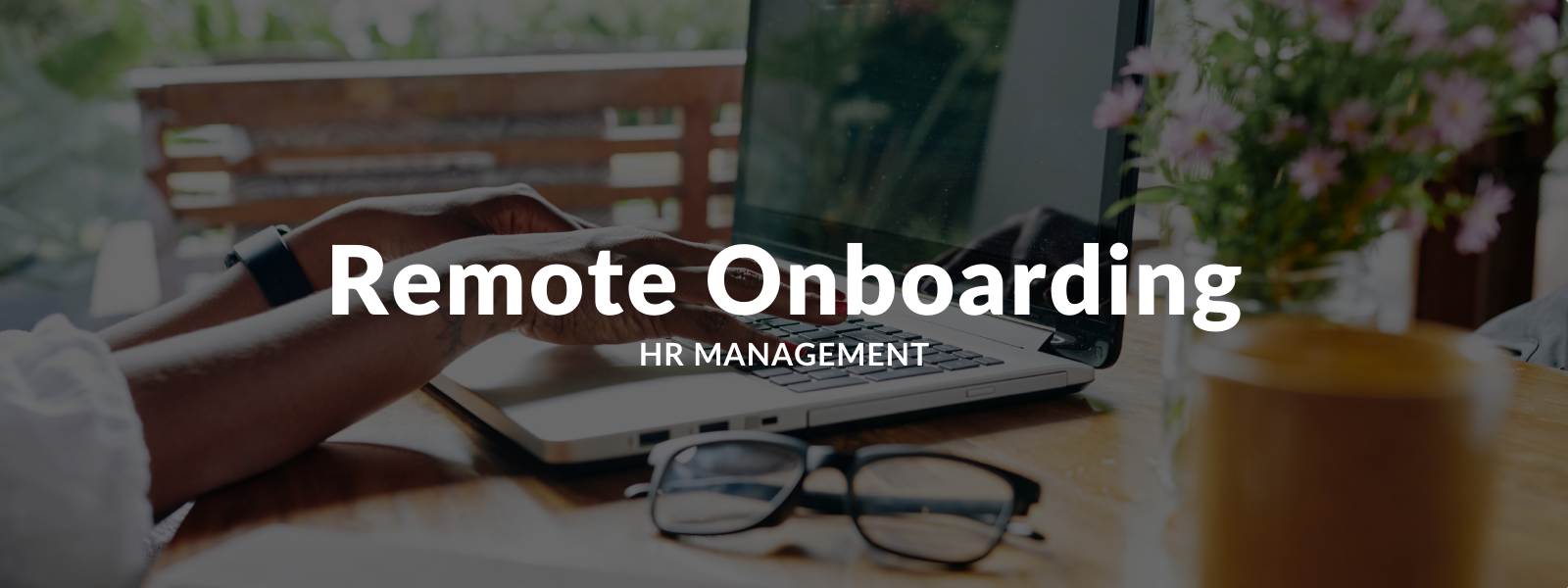By Kristina Laliberte on Sep 24, 2020 10:03:38 AM
There, you did it! Despite all that has been going on in the world, you were finally able to fill that one position that has been vacant for months. And even better, you found the perfect match! First off, congratulations! Finding the right candidate is not an easy task in ‘normal’ times and is even more challenging in the midst of a changing work environment. So, take a minute and be proud of yourself, you deserve it!
Now that the hardest part is done and you agreed on a date for the new colleague to start, it is time to start thinking about how to welcome your new team member and make a positive and long-lasting impression as a team and company.
The magic word is Onboarding
Onboarding is an important -and often underestimated- tool, not only to help a new team member to get familiar with how things work at your company but, more importantly, lay the groundwork for employee retention.
Per definition, onboarding is ‘the process in which new employees gain the knowledge and skills they need to become effective members of an organization.’ An SHRM study showed that 69% of employees are more likely to stay with a company for three years if they experienced great onboarding. And don’t we all want our employees to stay?
Okay, but how do I go about it?
You might have heard of or even experienced an onboarding process in your company already but you don’t know how to translate that into a virtual setting? Worry not, Talaera to the rescue!
We put together some ideas for your onboarding process that will help you shine as a manager and make your new team member not ever want to leave again. As an HR professional, you sure apply at least some of them already, but take it as a checklist to ensure your employee's wellbeing, especially during COVID times.
If you are hiring worldwide, consider these best practices to manage diversity and inclusion.
You sure know that the onboarding process starts the moment the new team member accepts the offer. With working remotely, you want to make sure they are all set and ready to go when the first day of work comes around. Here are some logistics to consider before they start:
- Make an onboarding checklist to help keep track of things
- Check with HR/Payroll if all the paperwork is complete and correct
- Make sure they get access to all necessary programs, including company email
- If you provide hardware (laptop, phone), check if it is set up properly and ready for use
- Let your team know about the new member and when to expect them
1. Send a Welcome Package
A nice way of welcoming a new employee is sending over a little package that contains everything they need to start their job as well as some company-branded gadgets. A welcome package can include but is not limited to
- Necessary hardware (laptop, mouse, etc.)
- Guides on how to set up the hardware and software and who to contact in case of issues
- General information on the company (Employee Handbook)
- A team chart with pictures of the team members and their responsibilities
- Company branded gifts like a t-shirt, coffee mug, etc. (the fanciness has no limit here :))
- Information on what to expect on their first day
- A personal note from you as a manager
After sending the package, make sure to check in with them to see if they received it and if they have any questions or need anything else.
2. Assign an onboarding buddy
Having a go-to person in the first weeks of starting a new job can be tremendously helpful to a new employee and will ensure that they can ease into their position and feel guided all the way. An onboarding buddy can provide them with information they typically don’t get out of a general employee handbook. They can give insights into established structures and how the communication works, and inform about go-to contacts for different topics and unspoken rules.
When determining an onboarding buddy you might want to consider the following:
- Reporting structure: Choose someone from the same team. If applicable, the person who is leaving the position
- Length of employment: The longer the buddy has been with the company, the more insights they can share
- The onboarding buddy’s workload: Make sure they have enough time to take care of the new team member and still be able to do their job
- Timeline: Communicate clearly for how long the onboarding buddy is available (ideally 90 days)
3. Structure the first day at work
Starting a new job can be overwhelming, even more so when you are not able to meet your new team in person and talk to someone on the spot when you have a question.
By structuring the first day of work you can take some pressure off the new employee and make sure they feel comfortable and well taken care of. Even though they are there to do a job, it is okay to make the first day about settling in and getting to know the team and workplace. Here are some suggestions on how to structure Day 1:
- Have a one-on-one video chat with your new team member to clarify their role and set expectations
- If possible, give them access to a shared knowledge base
- Make sure to give them a quick way of reaching out when they have questions (e.g. Slack, Messenger)
- Give them time to get familiar with the systems/software they need to use (e.g. tutorials or handbooks)
- Set up a video call with the onboarding buddy
- Set up a virtual lunch and meet or regular meeting with the rest of the team
4. Check-in frequently
Ideally, the onboarding process should take at least 3 months. If possible, you can prolong the process for up to one year.
Even if the new team member has settled in and is doing their job, it is important to stay in touch with them and check in frequently to make sure everything is going well. You can do this by
- Setting up weekly/biweekly check-in video calls
- Organize a virtual team happy hour outside of work to encourage your team members to get to know each other on a personal level
- Ask for feedback on the onboarding process and if something was missing
The goal of onboarding should be to make the new employee feel fully included and a valuable part of your team. Open communication and transparency throughout the process are key to long-lasting relationships, inside and outside of work. Read more strategies you can implement in the workplace to ensure your diverse workforce feels included.
Establishing and refining an onboarding process might take a while. However, once you have it down to a science, the results will speak for themselves. New employees will be able to work effectively much faster, not to mention the engagement and loyalty they will show towards you and your company. A little effort goes a long way when it comes to employee retention. And in this fast-paced world of ours, isn’t that what we all wish for our teams?
5. Include learning opportunities
According to a LinkedIn report, 94% of employees say that they would stay at a company longer if it invested in their career development. Offer educational learning sessions for remote employees, help them become a better version of themselves by working on a technical skill or on business English communication.
Looking for remote training opportunities for your new hires?
Help your employees take their professional English communication skills to the next level with Talaera. Pick any of the following online training modalities:
- Individual lessons - the most personalized course your workforce can get.
- Group courses - small groups with specific topics to work on.
- Company webinars - private sessions we customize for your company.
Remote. Flexible. Effective.
For any additional information or questions, you can also reach out at info@talaera.com.
Interested in getting the best offers and receiving free content on Business English communication? Subscribe to our newsletter and we will keep you in the loop with offers, free events, and development materials!
Continue reading:
- 10 Effective Strategies to Build a Diverse and Inclusive Workplace
- 4 Tangible Benefits of Having a Diverse Workforce
- 8 Companies With Great Company Culture Examples
- 4 Examples of How Companies Effectively Engage Their Employees
- Top 5 Perks Employees Enjoy at a Multinational Company
- 150+ Useful Email Phrases That Will Make Your Life Easier






comments